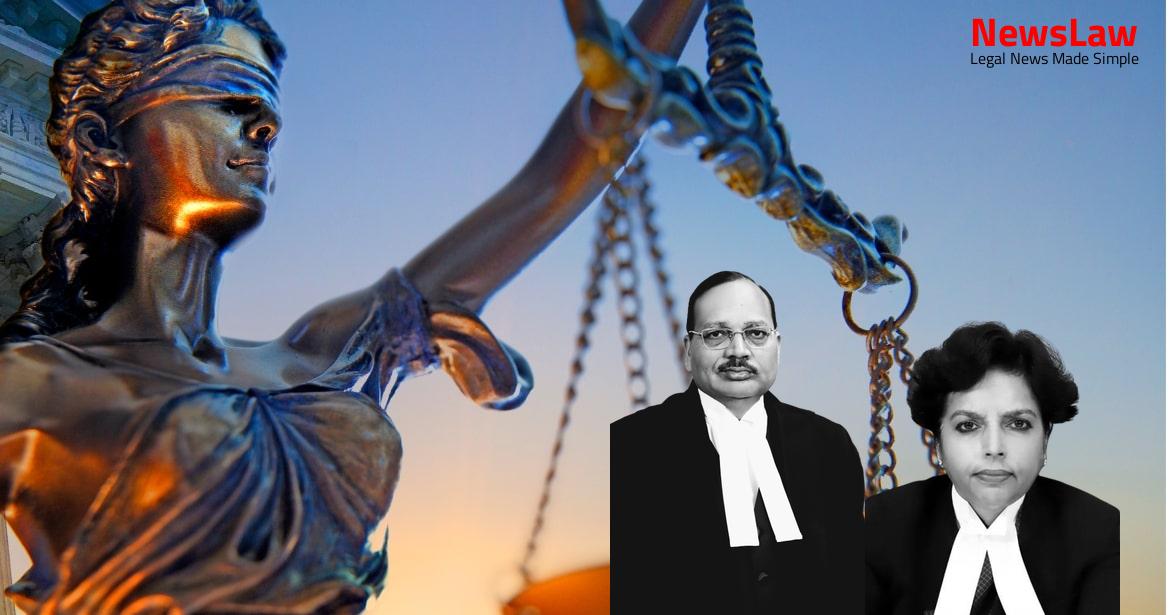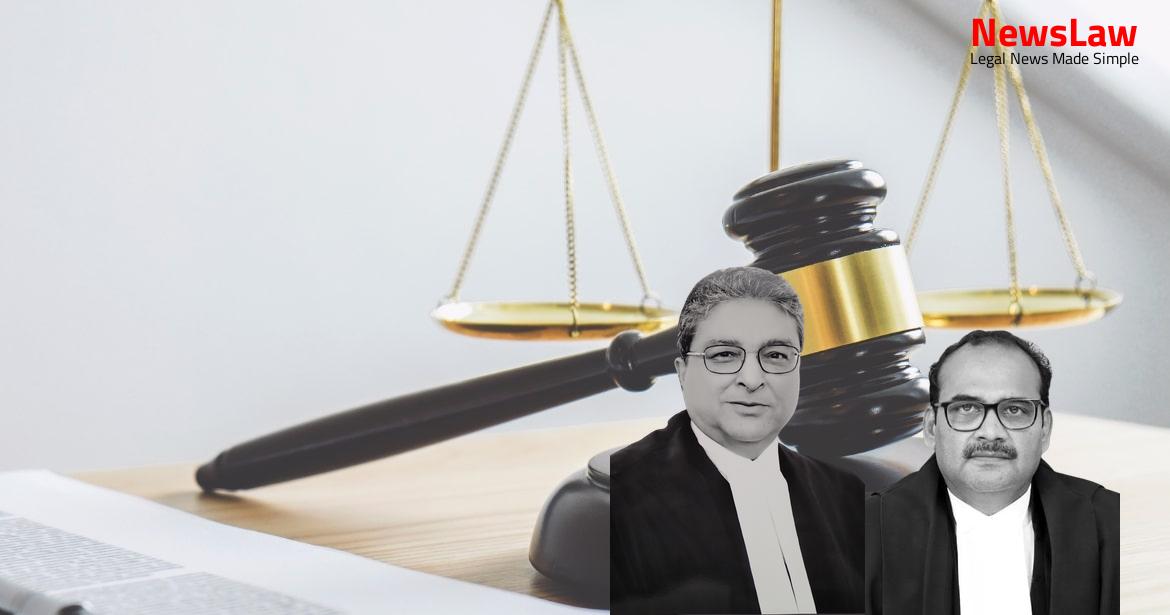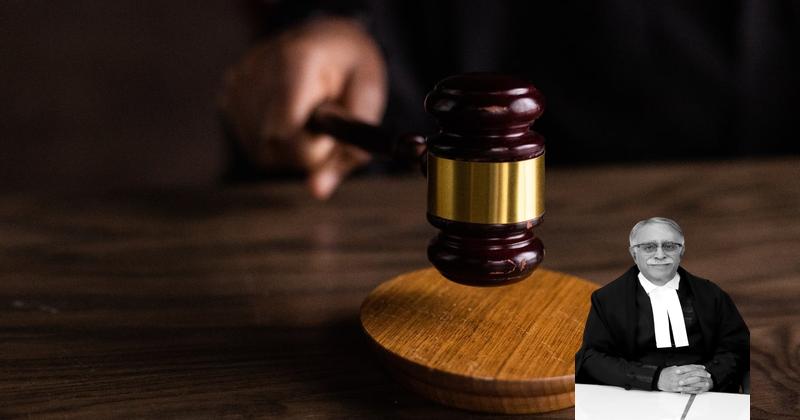The court’s detailed legal analysis in a breach of trust case sheds light on the complexities surrounding Sections 409, 420, and 477A of the IPC. Through a critical examination of the evidence and arguments presented, the court evaluates the elements necessary to establish charges under these sections. The focus remains on the requirement of concrete evidence of fraudulent intent and the significance of proving mens rea and deceit in cheating cases under Section 420 IPC. The analysis highlights the importance of strong, concrete proof in criminal cases. #LegalAnalysis #BreachOfTrust
Facts
- The High Court, similar to the Trial Court, did not consider the appellant’s defense regarding the withdrawal of Rs. 10 lakhs from account No 282.
- While the Bank did not suffer any financial loss, B. Satyajit Reddy incurred a loss as his deposits in the two FDRs were transferred without his consent.
- The Court highlighted that the appellant continued depositing monthly interest in B. Satyajit Reddy’s account even after prematurely closing the FDRs.
- The High Court inferred that the appellant encashed the FDRs without authorization, as subsequent interest payments were made from the appellant’s personal account.
- The Court concluded that the actions of the appellant, including the transfer of funds and falsification of records, were misuse of his official position.
- Despite the non-examination of B. Satyajit Reddy, the Court did not draw adverse inferences against the prosecution’s case.
- The High Court affirmed the Trial Court’s findings and dismissed the appeal filed by the appellant.
- In November, 1994, Badam Swamy (PW-2) conducted an audit of the Nizamabad Branch and found irregularities committed by the Branch Manager N. Raghavender.
- Detailed audit was ordered after the initial irregularities were discovered.
- Branch Manager, N. Raghavender, was accused of pre-maturely closing two FDRs for Rs. 10,00,000/- and Rs. 4,00,000/- respectively.
- Transactions engineered by the accused resulted in wrongful loss to the Bank and its depositors.
- Certain serious irregular transactions were executed by the Branch Manager bypassing normative protocols to benefit certain customers, including relatives.
- Internal inquiry and subsequent complaint to the CBI were initiated by the Chairman of the Bank after uncovering suspicious transactions.
- CBI registered case under multiple sections of IPC, leading to charges framed against the Appellant and his co-accused.
- Appellant and co-accused worked in tandem to engineer transactions, causing wrongful loss to the Bank.
- Allegations of fabrication of papers, writings, and accounts of the Bank were also made against the accused.
- Appellant and co-accused allegedly utilized illegal means to obtain a pecuniary advantage from the Bank.
Also Read: Analysis of Suppression of Information in Employment Selection: Legal Perspective
Issue
- The main issue to be determined is whether a case under Sections 409, 420, and 477A of the Indian Penal Code (IPC), along with Section 13(2) read with Section 13(1)(d) of the Prevention of Corruption Act, is established against the Appellant.
Also Read: Analysis of Cheating and Forgery in Passport Case
Arguments
- Learned Senior Counsel argued that the prosecution case is based on surmises and conjectures, with the best neutral evidence being withheld without explanation.
- Highlighted the two letters from B. Satyajit Reddy authorizing the Appellant to withdraw FDRs prematurely and transfer the amounts to the Academy’s account.
- Emphasized the failure to investigate if the Appellant had authorization for the premature withdrawals.
- Pointed out that the acquittal of Accused No. 3 and the statement of PW-1 and PW-8 admitting no loss to the Bank weaken the prosecution’s case.
- Argued that no benefit was gained by the Appellant, and it was a case of administrative misconduct for which he had already been dismissed.
- Challenged the findings of the High Court regarding the use of loose cheques and absence of relevant ledger entries.
- Asserted that the Bank did not suffer any losses and that the total deposit had increased significantly during the Appellant’s tenure.
- Stressed the lack of charges specifically related to the deposit of interest in B. Satyajit Reddy’s account after FDR closure.
- Highlighted inconsistencies in the evidence regarding sufficiency of funds in the Academy’s account during the transactions.
- Argued the absence of mens rea and the failure to prove the Appellant’s signatures on the cheques.
- The prosecution, represented by the learned Additional Solicitor General, vigorously defended the judgments of the Trial Court and High Court.
- Differentiating between the essence of Sections 409, 420, and 477A of the IPC, it was argued that the Appellant’s actions involved unauthorized conversion of public funds, shifting the burden onto him to prove compliance with all transactions genuinely and adhering to requirements.
- The ASG reiterated that establishing criminal intent under the mentioned sections did not require proving benefit or loss to the Bank.
- It was emphasized that the Courts below had thoroughly examined the evidence, distinguishing between questions of law and mixed questions of law and facts.
- The ASG highlighted the issuance of bank receipts without securities as illegal, benefitting the Appellant’s brother-in-law, and argued that such actions could not be justified by internal procedures of the Bank.
- The Appellant, as the custodian of the Branch, was held responsible for failing to discharge his duties.
Also Read: Discrepancy in Date of Birth: Court’s Legal Analysis
Analysis
- The judgment analyzed the evidence and allegations concerning the premature withdrawal of funds and the unauthorized transfer of FDRs in detail.
- It pointed out discrepancies in the evidence presented by the prosecution, especially regarding the misappropriation of funds and breach of trust.
- The absence of crucial evidence, such as the testimony of B. Satyajit Reddy, was highlighted as a significant flaw in the case.
- The courts evaluated the elements necessary to prove charges under Sections 409, 420, and 477-A IPC, emphasizing the need for concrete evidence of fraudulent intent.
- The analysis raised doubts about the prosecution’s case, particularly regarding the conspiracy allegations and financial loss to the bank.
- It highlighted the importance of establishing mens rea and deceit in cheating cases under Section 420 IPC.
- The analysis also discussed the actions and responsibilities of the accused as bank officials, emphasizing the breach of duty and financial risks faced by the bank.
- Considering the evidence and arguments presented, the judgment questioned the validity of the conclusions reached by the lower courts, calling for a more thorough examination of facts and evidence.
- The court underscored the principle of ‘innocent until proven guilty’ and the necessity of strong, concrete proof in criminal cases.
- Finally, it critiqued the investigative process and the lack of comprehensive evidence, suggesting that the benefit of the doubt should be provided to the accused in the absence of clear proof of wrongdoing.
- Entrustment of public property and dishonest misappropriation defined under Section 405 IPC
- Essential elements to prove criminal breach of trust under Section 409 IPC
- Ingredients necessary to attract Section 405 IPC
- Dishonesty and mens rea as key elements in criminal breach of trust
- Provisions of Section 477A IPC regarding falsification of accounts
- Requirements to prove an accusation under Section 477A IPC
- Essential elements to prove a charge under Section 420 IPC
- Prosecution failed to prove charges under Sections 409, 420 and 477A IPC against the Appellant beyond reasonable doubt.
- Benefit of doubt given to the Appellant due to thin margin between ‘strong suspicion’ and ‘conclusive proof’.
- Appellant deemed guilty of gross departmental misconduct leading to dismissal from service.
- Dismissal from service is the adequate punishment for gross departmental misconduct.
- Appellant not entitled to seek reinstatement or claim other service benefits from the Bank.
Decision
- Standard of proof for establishing misconduct in a domestic enquiry is preponderance of evidence
- Standard of proof for proving a criminal charge is beyond any reasonable doubt
- The appeal has been disposed accordingly
Case Title: N.RAGHAVENDER Vs. STATE OF ANDHRA PRADESH REP. BY CBI (2021 INSC 876)
Case Number: Crl.A. No.-000005-000005 / 2010



